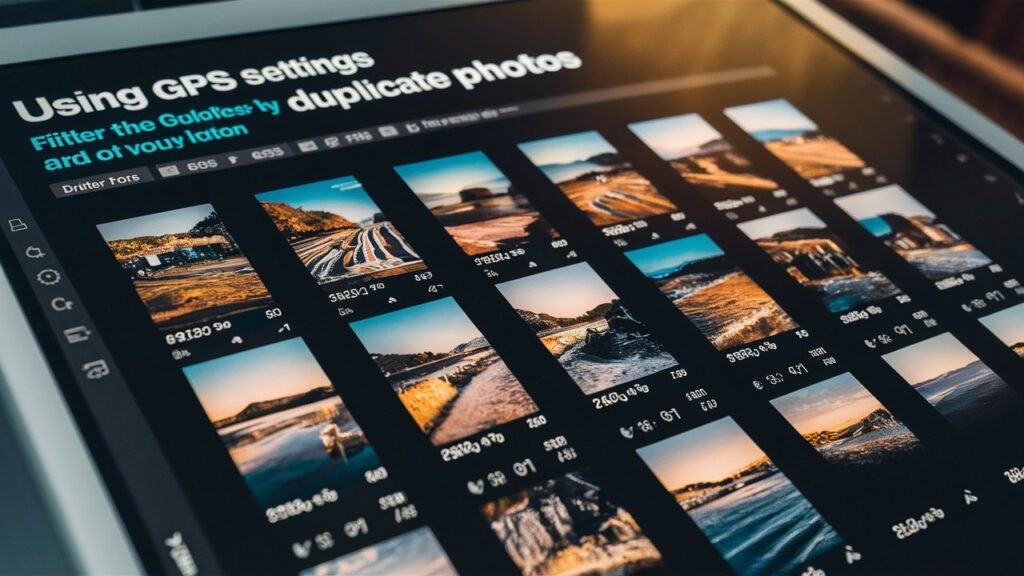If you want to use the GPS settings to find and delete duplicate images on your computer, then you are at the right place!
Managing our ever-expanding picture archives may be difficult in this digital era when taking endless images is second nature. Among the many problems that photographers have is the problem of duplicating photographs, taking up valuable storage space. Luckily, because of technological advancements, features such as GPS settings have become quite useful for effectively recognizing and managing duplicate images.
Anywhere on our planet, you may get your precise position and time stamped by the Global Positioning System (GPS), a navigation system that relies on satellites. The ability to include geographical locations in picture metadata has been made possible by the widespread use of GPS capabilities in recent smartphones and digital cameras. You may easily organize your picture collection with the help of this tool, which can identify duplicate photographs depending on their location.
Different GPS Settings to Identify Duplicate Photos
You don’t always need to use Free Duplicate Photo Finder programs to find and delete duplicates from your system. Here’s how you can harness GPS settings to streamline the process of identifying duplicate photos.
- Enable GPS Tagging:
Firstly, it is essential to verify that the GPS tagging functionality of your smartphone is activated. You can usually locate this feature in the camera or location settings of your smartphone or digital camera. Enabling GPS tagging on your smartphone will automatically append geographical information to every picture you take, offering crucial location data.
- Choose a Suitable App:
Various applications are specially developed to manage and arrange images according to GPS information. Search for applications that include functionalities such as GPS-based categorization, identification of duplicate photos, and the ability to edit multiple files simultaneously. Some popular choices for managing photos on a computer include Google Photos, Adobe Lightroom, and PhotoSweeper.
- Import Your Photos:
Import your entire collection of pictures into the app after selecting one. This procedure can take a while, depending on how large your collection is, so it’s best to be patient. The application examines the information on your photos, including GPS location, in order to classify them.
- Utilize GPS-Based Sorting:
Once you have imported your photographs, make use of the app’s GPS-based sorting tool. This feature enables you to see your images on a map, facilitating the identification of groups of duplicate photos taken in the same geographical area. By magnifying certain regions, you may promptly identify duplicate photographs and implement suitable measures.
- Initiate Duplicate Photo Detection:
Several picture management applications include algorithms that can autonomously identify duplicate photographs using different criteria, such as GPS positions. Enable the duplicate picture detection function in your selected application to scan your photo collection for identical photographs. After identifying duplicates, the application will display them to you for examination and removal.
- Review and Delete Duplicates:
Thoroughly examine the replicated images found by the application and choose which ones to retain and which ones to remove. When making your selections, take into account variables such as the quality of the photograph, the composition, and the emotive worth. Retain the optimal iteration of every photograph while eliminating redundant copies to liberate store space and optimize the organization of your picture collection.
- Batch Editing and Management:
To enhance the speed of the procedure, make use of the batch editing and management features provided by the application. These functionalities enable you to make modifications, add tags, or modify metadata for numerous photographs at once, so saving you time and effort. By clicking a few times, you can efficiently arrange, improve, and optimize your complete compilation of photographs.
- Regular Maintenance:
Over time, duplicate images might be collected, particularly if you are a passionate photographer. Develop the practice of routinely examining and organizing your picture collection by using GPS-based categorization and duplicate identification methods. To maintain an orderly and clutter-free picture collection, it is important to be proactive in preventing the accumulation of duplicate photographs.
Wrapping Up
GPS settings provide an effective option for finding and managing duplicate photographs in your digital photo collection. By using the GPS information included inside each picture, you can efficiently speed up the process of collecting, categorizing, and tidying up your collection. Regardless of whether you are an amateur or an expert photographer, being proficient in GPS settings will empower you to manage your picture collection effectively and enhance your photographic experience.

